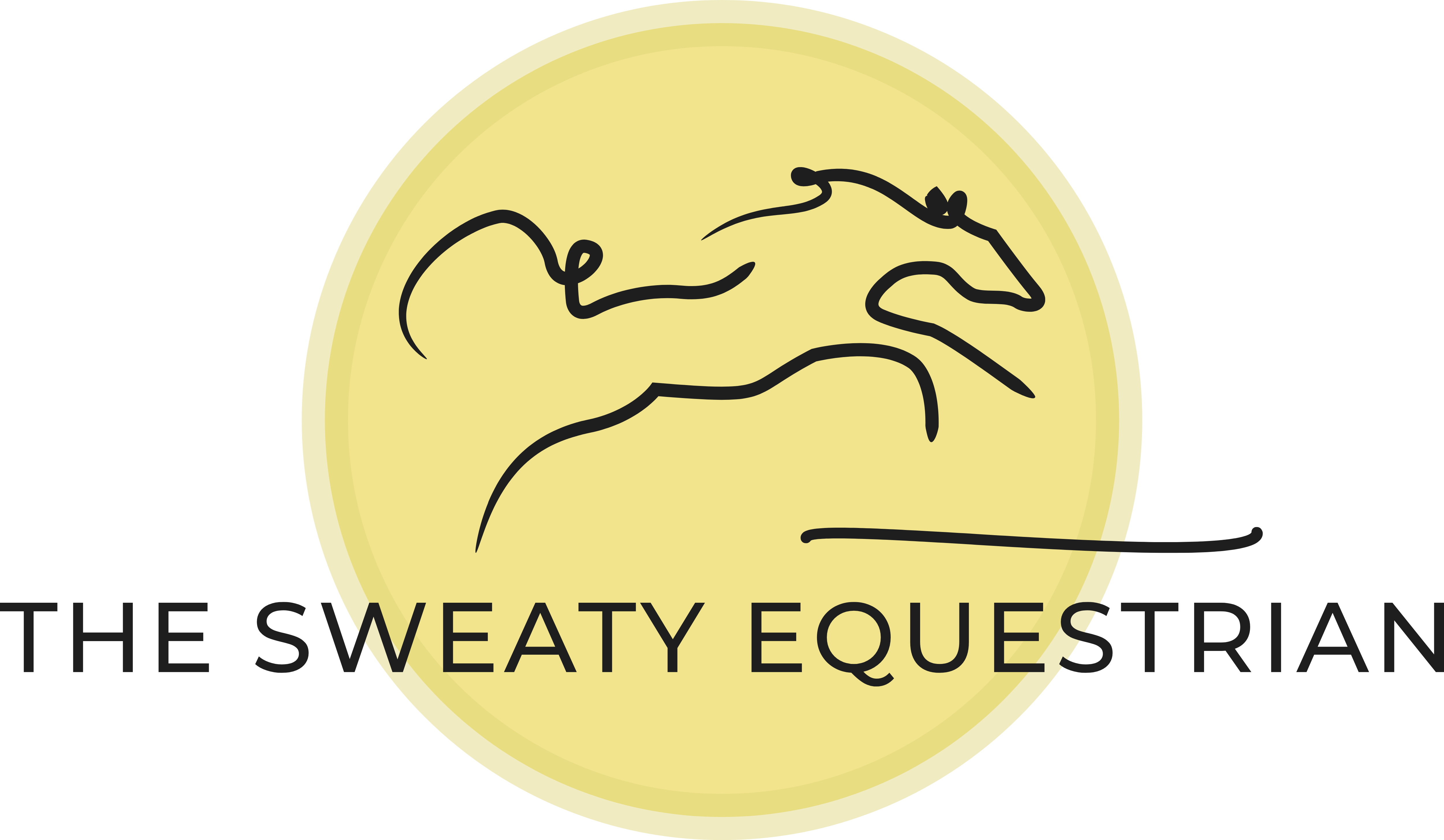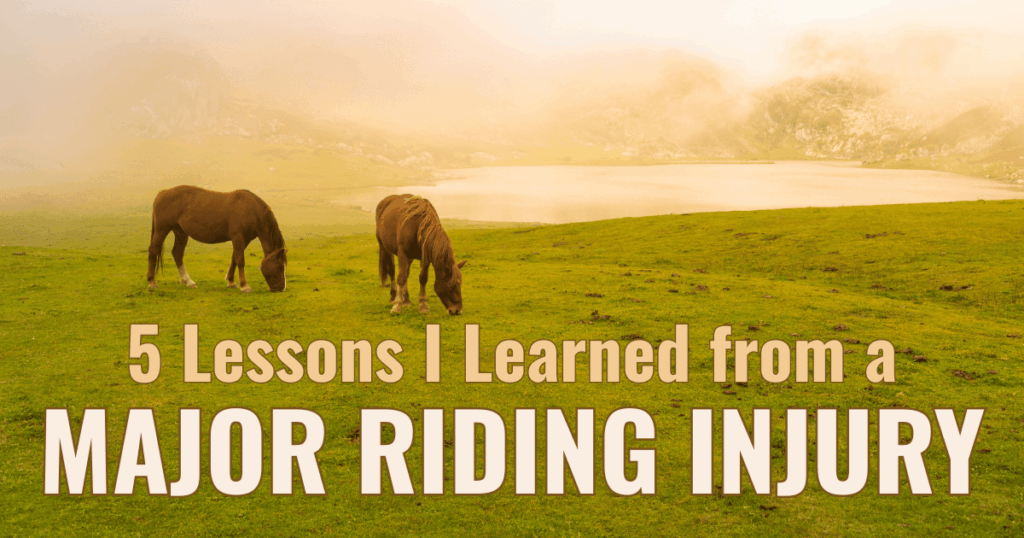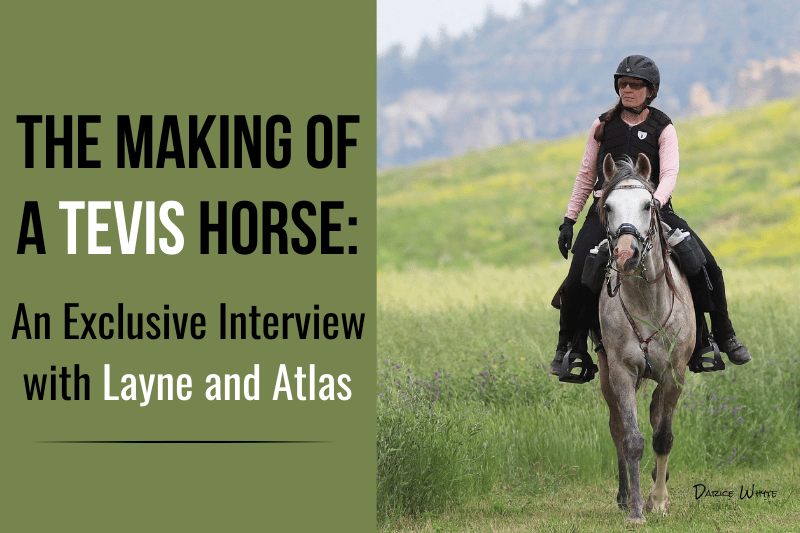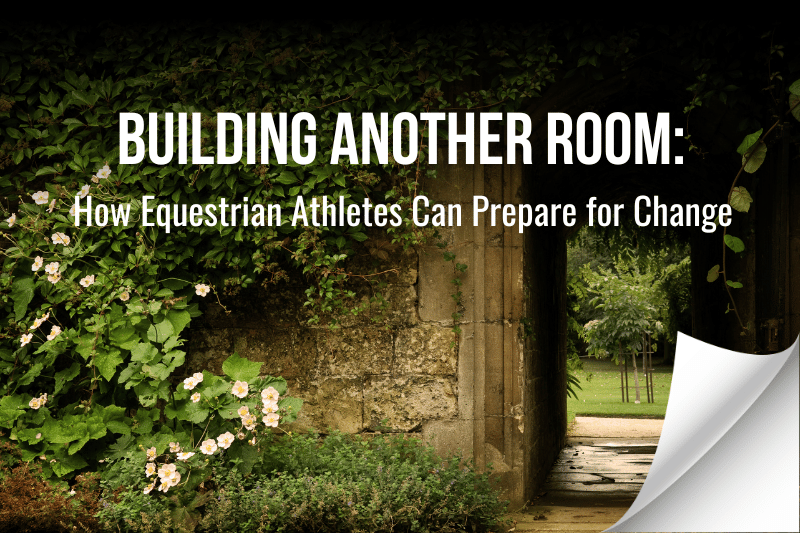It wasn’t even my injury.
The wreck happened to Layne, my dear friend who was just back on the endurance trail after her second spinal surgery in two years.
She hadn’t gone a mile from the start when it happened: Her horse, in a moment of impatient head-tossing, fell down. He got up unscathed, but she stayed on the ground with a tib-fib compound fracture.
After the weight of the horse himself, no more weight went on Layne’s leg for over three months. And even that was only the beginning.
The whole ordeal began thirteen months ago. Thirteen months of pain and celebration, of discouragement and adjustment, of discovery, of two steps forward and one step back. Thirteen months during which I’ve had the privilege of campaigning the horse in question – our frustrating and funny and powerful and fragile and astonishing and beloved Atlas. Thirteen months that have amounted to a masterclass in recovering from a major riding injury.
I sometimes joke that if (knock wood) it’s ever my turn to go through a similarly serious wreck, I will be as prepared as possible to handle it in style.
…only, I’m not joking. I really will be.
Here is what I’ve learned:
1. Getting Back in the Saddle ASAP Isn't the Right Goal
It seems like every time an endurance rider gets hurt, one of the first conversations that comes up is, “When will you be riding again?”
The implication, of course, is that sooner is better. Indeed, injured riders make the usual jokes: “I may not be able to walk, but hell, I can ride!” and “We’re endurance riders – gritting it out is what we do!”
So, I was keenly interested to see Layne (who is not merely an endurance rider, but also an Ironman triathlete, successful entrepreneur in the engineering field, and certified badass) take a different approach.
She let go not just of the timeline, but of the perceived importance of a timeline. There was no sense of having to get back to riding for a particular event, or by the next season, or as soon as possible. In fact, even when her doctor cleared her to start riding, she decided to wait.
Why?
Because getting back in the saddle “as soon as possible” wasn’t her goal. Her goal was to get back in the saddle “as prepared as possible.” For her, that meant not just being able to ride, but being able to mount from the ground and (critically) jump off in a hurry if necessary. Plus, she wanted to be able to walk several miles home if she ever had to.
That self-imposed standard, in turn, meant regaining considerable mobility, strength, and confidence through gradual, intentional, incremental exposure to smaller versions of relevant movements – hip rotation, quadriceps strength, jumping and landing – for months before ever putting a foot in the stirrup.
2. Professional Support is Worth the Money
As a group, we endurance riders have a bad habit of spending all our money at the vet, optimizing our horses’ physical capacities while letting our own aches, imbalances, and compensations fester.
Sure, riding hurts more than it used to…but as long as my horse is comfortable and I can grit it out, we’re good, right?
Wrong.
You, Rider, are half of the team! Since when would you expect a pair of figure skaters to head to the Olympics with only one member getting medical care? Since never, right?
Why?
Because the team won’t perform well unless both members are in the best possible physical condition.
If you lack the mobility and strength to support your horse, you are getting in his way. This may slow him down, cause him discomfort, or (most likely) both. I’m pretty sure you’re not okay with that.
Even old or chronic pains – whether from injury or illness – can often achieve surprising relief in the hands of a skilled practitioner. A good soft tissue doc, chiropractor, functional medicine practitioner, physical therapist, personal trainer, or nutritionist might be just what you need to optimize your recovery. Layne assembled a team of all those experts, plus a massage therapist and yoga instructor!
Here’s the key to getting your money’s worth out of professional support: Do your homework!
If there was one thing I’ve observed about Layne during her recovery, it is that she has been consistent – indeed, relentless – in following through on her experts’ assignments: Absolutely no weight on that leg for twelve weeks? Yessir! Twenty difficult and boring step-ups per day? Yes, ma’am!
When your physical therapist or personal trainer assigns exercises, do them. When your functional medicine doc recommends an elimination diet, stick to it faithfully. The experts’ solutions rely on your actions.
3. It's Important to Find New Sources of Joy
How often have you heard an equestrian say, “My horses are my life,” or “I live for my horses?”
Obviously, we all place great value on our relationships with our horses. Being suspended from saddle time – and perhaps letting go of big dreams – is deeply disappointing. There’s nothing wrong with that.
But I must say, I find it disturbing when my fellow riders are absolutely soul-crushed when an injury knocks them out for a season. Wouldn’t it be better, healthier, and more resilient to shift to other sources of joy?
This is a skill that Layne has honed and tested over the past few years. There’s nothing like a major back surgery…then a second one…then a serious compound fracture to make you choose between bitter frustration and enjoying new pleasures. While not riding, Layne read more books, threw pottery, got certified as a personal trainer and nutrition coach, and spent extra time with her grandkids.
She also had the grace to share the joy of her beloved horses. Instead of being jealous that others could ride while she couldn’t, she gave me the opportunity of a lifetime: riding Atlas for two, full seasons…including Tevis. Is there a higher achievement in life than that kind of generosity?
Of course, we don’t need to wait for an injury to prepare for change by broadening our interests. In an article called Building Another Room: How Equestrian Athletes Can Prepare for Change, I wrote, “If we build enough rooms, one will be habitable while another is trashed. Our identities will continue to blossom in the sunshine, feeding the interconnected roots of chilled ambitions elsewhere. We will weather the seasons (yes, even the rare-but-severe permanent ones) from a place of peace.”
In other words, if we foster diverse interests now, we’ll have somewhere pleasant to land when we’re unable to ride.
4. Pre-Injury Fitness is Invaluable for Optimal Outcomes
Nurturing interests beyond the endurance trail isn’t the only thing we can do now to prepare for optimal injury recovery later.
Throughout her recovery, Layne has frequently cited her high pre-injury level of fitness as key to her ability to recover optimally. There are several reasons why maintaining a fit, healthy body helps riders recover better when they do get hurt:
Fitness correlates with a healthy metabolism. Going into an injury with plenty of muscle mass and a robust cardiovascular system gives you a buffer against the bodyfat gain that tends to accompany long periods of inactivity. This is key not only to remaining lean, but also avoiding metabolic disorders like pre-diabetes and hypertension.
Greater strength, mobility, and cardiovascular fitness enable injured riders to participate more fully in their own rehabilitation programs, since their bodies are prepared for more intensity and volume of exercise. Layne’s strong upper body meant she could tackle long treks using her walker, with that injured leg still non-weight-bearing, that would have been impossible otherwise. And, she had the athletic ability to continue training her uninjured limbs, which research shows actually mitigates muscles loss in immobilized body parts.
A pre-existing commitment to the practice of fitness translates smoothly into the discipline of recovery. Layne didn’t struggle to keep up with her robust physical therapy regime because she has a long history of putting in tough workouts…whether she feels like it or not. As a result, her doctors repeatedly expressed astonishment at her ability to outstrip the average patient’s rate of recovery.
Riders who have a history of robust physical fitness not only lose less fitness during enforced breaks, but they also regain fitness more quickly than those who have never been particularly fit. It seems our cells have a sort of “memory” – including structural adaptations and neuromuscular coordination – that sticks with us and is ready to fire up again when we are.
And finally, Layne would tell you that the body awareness that comes with being an athlete (yes, even an amateur or hobby athlete!) is key to smart recovery. As we work to rehabilitate from injury, a keen ability to differentiate between discomfort (such as from a challenging from exercise) and pain (from doing too much, too soon) is helpful not just for avoiding reinjury, but also feeling confident to push through mental limitations that would otherwise restrict us from regaining our full range of motion.
5. Using Your Body Fully NOW Makes Injury Easier to Accept Later
Another conversation Layne and I have had throughout the course of her recovery is that, despite the inevitable grief of letting go of past abilities, there is great satisfaction in knowing that you didn’t miss your chance.
For example, Layne’s distance running days are a thing of the past. While she technically can run now, it’s no longer an optimal choice for recreation or cardiovascular workouts. For a never-say-die badass athlete, that’s a tough pill to swallow.
But you know what makes it a lot easier to accept?
The fact that when she could really run, she really ran! She finished several marathons, including one as part of a full Ironman triathlon, and a thousand training runs besides. She got to know that challenge and triumph, and is now left without doubt, without regret, without the lingering “I wish.”
Whether it’s injury or just plain old age that gets you in the end, change will be easier if you can look back and say, “I can’t do that now, but I did it when I could.”
Don’t be that rider who dreams of “someday.” Do the work, make the sacrifices, get fit, take on the challenge, catch your dreams. Live now.
Are you ready to become a full athletic partner for your distance horse? Consider joining our fitness-focused crew of endurance riders inside The Sweaty Equestrian Membership. We’d love to have you.
Enjoying the blog? Join my free newsletter and never miss a post!



